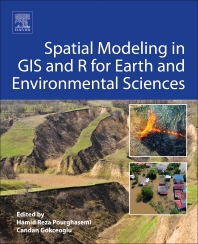Nowadays, the use of GIS (Geographic Information Systems) is emerging as a powerful tool for the assessment of different types of natural hazards. Flash floods are among the most severe natural hazards which have disastrous socio-economic impacts. For that, it is so urgent to develop flash flood susceptibility hazard map to delineate flood prone areas. The produced map will help the authorities, planners and decision makers for rapid assessment and take appropriate arrangements of the potential impact of flash floods in order to reduce and minimize their consequences. The current study will address the characterization of flash flood hazard along some watersheds that drain their water towards the Ras Gharib area, located along the west coast of the Gulf of Suez, Egypt. Ras Gharib area is frequently affected by flash floods causing death, damages to buildings and infrastructures and vehicles. One of these flash floods happened on 18th October 2016 where the area was impacted by a disastrous flash flood causing a death toll of 22 persons and enormous damages to the infrastructures and residential areas. In the current study, multi-criteria analysis, using the Analytical Hierarchy Process (AHP) and Geographical Information System (GIS) techniques, was carried out to establish a flood hazard susceptibility map for the study area, through the combination of different flood related factors. Different methods were applied to assess the reliability and credibility of the proposed model. Flash flood areas due to 2014 and 2016 events were compared and the results of the model revealing that approximately 80% of both of them are located in flash flood susceptible areas. Our findings revealed that the proposed model is very suitable for flash flood susceptibility analysis and can be useful for engineers, planners and decision makers in spatial planning and flash flood hazard management.


